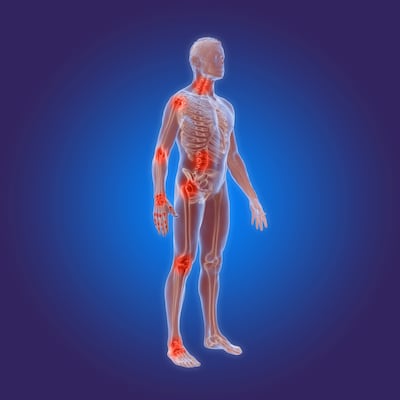Osteoporosis – characterised by depleted bone mass and disrupted bone architecture – is the commonest bone disease in the world. According to the Irish Osteoporosis Society it affects 300,000 people in Ireland and is typically a silent and painless condition whose presence is often only detected following a fracture. The sites most often affected are the spine, hip and wrist.
A report in the journal Archives of Osteoporosis estimated that, in 2010, there were 18,000 new fragility fractures in Ireland; the economic burden associated with previous and incident fragility fractures totalled €223 million; and over 6,000 quality-adjusted life years were lost. The report estimated that in 2025 there will be 28,000 new fragility fractures in Ireland at an economic cost of €320 million.
There is clearly a need to monitor current trends in osteoporosis-related fractures if resources are to be appropriately targeted in the context of Ireland’s future healthcare needs.
To meet this challenge a wide-ranging study was undertaken by Dr Michael Kelly of University Hospital Galway, alongside Consultant Rheumatologist Dr Carmel Silke and the Research Co-ordinator Ms Bernie McGowan, at the North Western Rheumatology Unit, Manorhamilton, Co Leitrim. They used the Hospital In-Patient Enquiry system to analyse data on fracture admissions in Irish hospitals between 2000 and 2014 inclusive. They aimed to both identify emerging trends in hospitalisation for fragility fractures in Ireland and to estimate the number of osteoporotic fractures by 2046.
The results, reported in the Irish Journal of Medical Science, showed that hospital admissions for osteoporotic fractures rose from 9,656 in 2000 to 12,579 in 2014, an overall increase of 30 per cent. It is widely assumed that only women are at risk of developing osteoporosis – especially elderly women – but as Dr Kelly told The Irish Times, this is not the case: "Osteoporosis is not just a condition that affects women; almost 30 per cent of fragility fractures reported in our study were in males, yet it has been previously reported that men represent only 15 per cent of those receiving treatment for osteoporosis."
Comparing days spent in hospital because of osteoporotic fractures, there were 130,884 hospital bed days in 2000, but 197,465 in 2014, a 51 per cent increase.
Hip fractures were the most common osteoporosis-related fracture, accounting for 36.5 per cent of all hospital admissions. But there was an interesting finding in women, whose rate of hip fracture showed a significant decline from 5.49 per 1000 women aged over 50 years in 2000 to 4.37 in 2014.
By comparison, the rate of hip fracture among men remained essentially static over the study period at 1.8 per 1,000 men aged over 50 years. The report authors stated: “One could speculate that an increased awareness of osteoporosis as well as advances in the medical management of the condition have contributed to the decrease in hip fracture rates in that population.”
Of all EU countries Ireland is projected to have the greatest increase in its elderly population by 2035
And commenting further, Dr Kelly said: “The most important information arising from this study is that despite a declining hip fracture rate in females – indicating that healthcare interventions appear to be working for hip fractures – the overall number of fragility fractures is increasing in Ireland.”
Kelly’s appraisal is confirmed by the bleak estimation in the report that “hospitalisations for all osteoporotic fractures are projected to increase by 150 per cent to 31,605 in 2046, 58 per cent of whom will be 80 years or older.”
In this context it is significant that the United Nations have estimated that of all EU countries Ireland is projected to have the greatest increase (117 per cent) in its elderly population (over 65 years) by 2035.
But leaving health considerations aside, what might be the economic cost of what is arguably an osteoporotic time bomb?
Kelly and colleagues considered diagnosis-related groups (DRGs), which are “classification systems that group patients according to the consumption of resources required for their treatment and their clinical characteristics.”

In 2014 the estimated DRG costs for all osteoporotic fractures in women was €81,005,973, more than double the DRG costs for men of €36,557,502. A glimpse into the future, according to the Kelly report, reveals: “The total cost of all osteoporotic type fractures is projected to increase from €117,563,475 in 2014 to €304,350,613 by 2046 . Hip fracture costs are projected to increase from €54,889,362 to €162,192,258 in 2046, a 200 per cent increase on 2014.”
What is Dr Kelly’s take-home message for readers? “Osteoporosis,” he explains, “is a condition which predisposes both men and women to fractures; particularly of the hip, spine and wrist, which can be sustained with little impact or force applied to the bone. These are often associated with significant long-term health risks and even an increased mortality risk. Adequate vitamin D, calcium and weight-bearing exercise can help reduce the risk of fracture, but many patients require further medical management with a bone health specialist.”
Kelly also emphasises the importance of investing in preventative bone health services: “If we continue at the current rate,” he warns, “it will place a huge burden on our already stretched healthcare system”.













